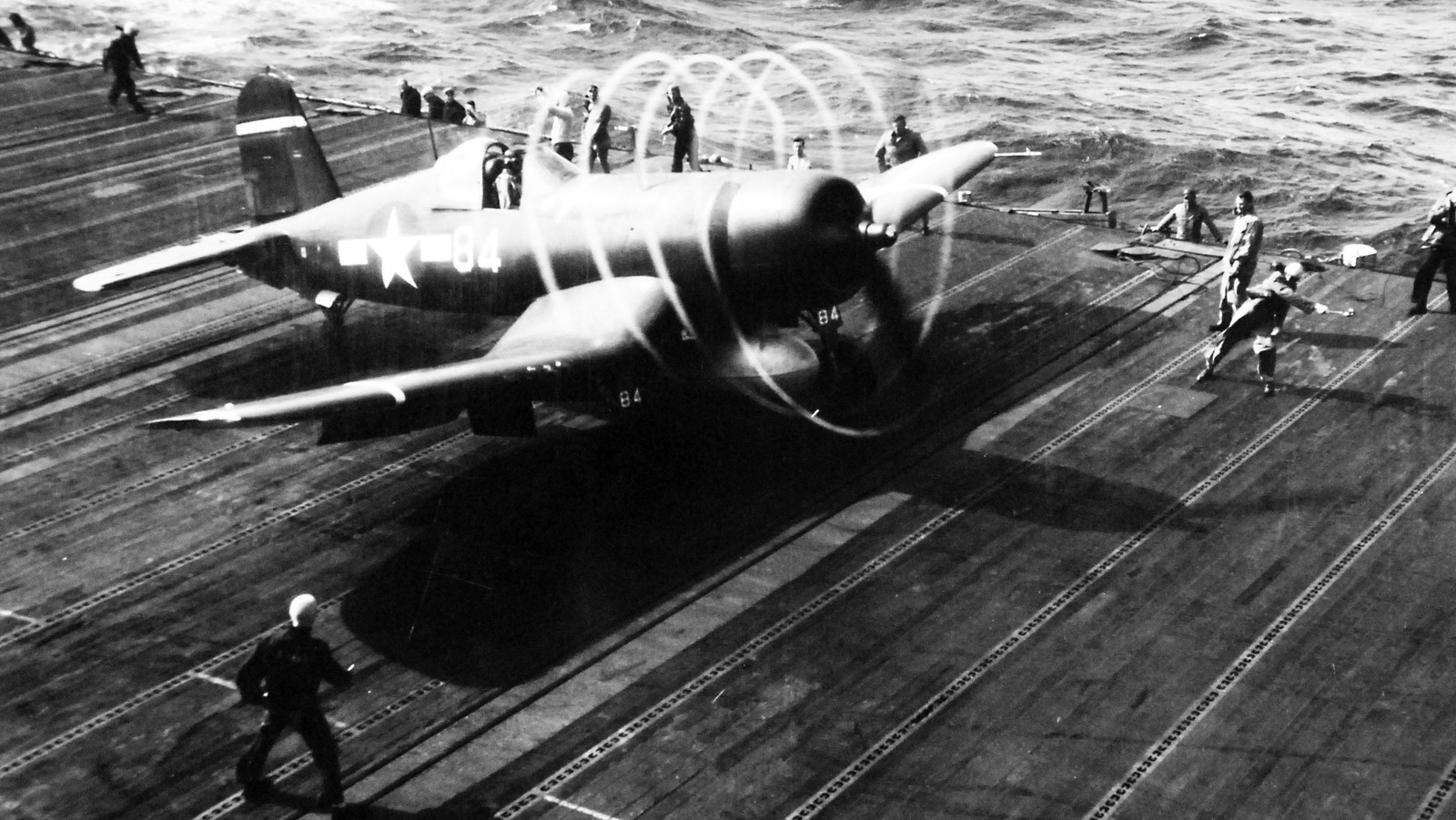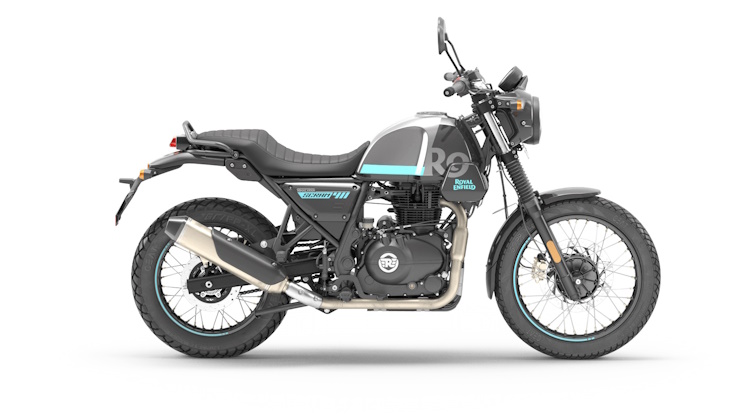
The World War II F4U Corsair Was The Allies’ Best Weapon In The Pacific – SlashGear
In the European Theater of World War II, the P-51 Mustang was the top aircraft when it came to shooting down or otherwise nullifying Axis airpower. In the Pacific, planes like the P-38 Lightning scored major hits against the Imperial Japanese, including killing Imperial Japanese Navy Admiral Isoroku Yamamoto. But the real king of the skies over the Pacific Ocean was the Vought F4U Corsair.
It was a veritable hotrod of a fighter plane, and with a top speed of 446 miles per hour, it was briefly the fastest plane in the U.S. arsenal. it was powered by a 45.9-liter 18-cylinder radial Pratt and Whitney R-2800 “Double Wasp” engine that churned out an astonishing 2,000 hp. For comparison, the 27-litre V12 “Merlin” engine used by the famed Mustang was rated at 1,490 hp. The Corsair engine’s distinctive howl gave earned it the nickname of “the Whistling Death.” Its cockpit was pushed pack to accommodate its huge engine. But the most distinctive feature of the Corsair was its pair of folding gull-wings that allowed it to be more compact on the deck of an aircraft carrier.
The P-38 Lightning gets the credit for the most air-to-air kills in the Pacific Theater, primarily because it was in combat longer than the Corsair. Right after it showed up on the scene in 1943, the Corsair proved to be incredible at air-to-air combat against the quickly dwindling power of the Japanese Empire.
The bane of Imperial Japanese fighters
 U.S. Navy
U.S. Navy
The folding design of the Corsair lent itself to carrier-based operations by the Navy, but that was only a small part of the its story. Problems with the airframe when it was first introduced delayed its Naval ship debut until 1944. It was used to great effect as a land-based fighter by the U.S. Marines during the Allied Force’s island-hopping campaign. The primary air-to-air armament of the Corsair were six .50 caliber machine guns. But it was also capable of carrying bombs, rockets, and whatever else the Marine Corps needed to make life difficult for the Imperial Navy and Army. The Corsair’s versatility and carrier-centric design made the plane infinitely valuable when taking off and attacking from short hastily prepared runways on Pacific Islands.
As the war came to a close, desperate Japanese forces deployed Kamikaze pilots who would intentionally ram their aircraft into Allied targets. When the Corsair saw combat from the deck of an aircraft carrier, it excelled at repelling these attacks and other last ditch efforts by the Imperial Navy.
Into Korea and beyond
 U.S. Navy
U.S. Navy
The numbers illustrate the Corsair’s story of dominance over the Imperial Japanese Navy’s aircraft. Over the course of the war, the Corsair down a total of 2,140 aircraft for an absolutely mind-boggling 11-to-1 kill ratio. Specifically, the “Jolly Rogers” of Fighter Squadron 17 were responsible for downing 152 planes. The Corsair was also exported to use by British Royal Navy. Flying for the U.S. military, the Corsair stayed in service until after the Korean War. During that conflict, a Corsair flown by Marine Captain Jesse Folmar managed to down a Soviet MiG-15 fighter plane.
Export versions of the plane remained flying until the 1970s, proving the Corsair’s fighting mettle. Much like the P-38 Lightning, the Corsair likely wasn’t going to win any contests in the looks department, but few other aircraft that have ever flown can measure up to the Corsair in terms of sheer combat effectiveness when it was needed most.























![Keto Ozempic Gummies Reviews [Beware Exposed 2023] Watch Keto Ozempic ACV Gummies Side Effects? Keto Ozempic Gummies Reviews [Beware Exposed 2023] Watch Keto Ozempic ACV Gummies Side Effects?](https://i0.wp.com/images.mid-day.com/images/images/2023/jun/Keto-Gummies-1906_d.jpg?fit=300%2C300&ssl=1)






























